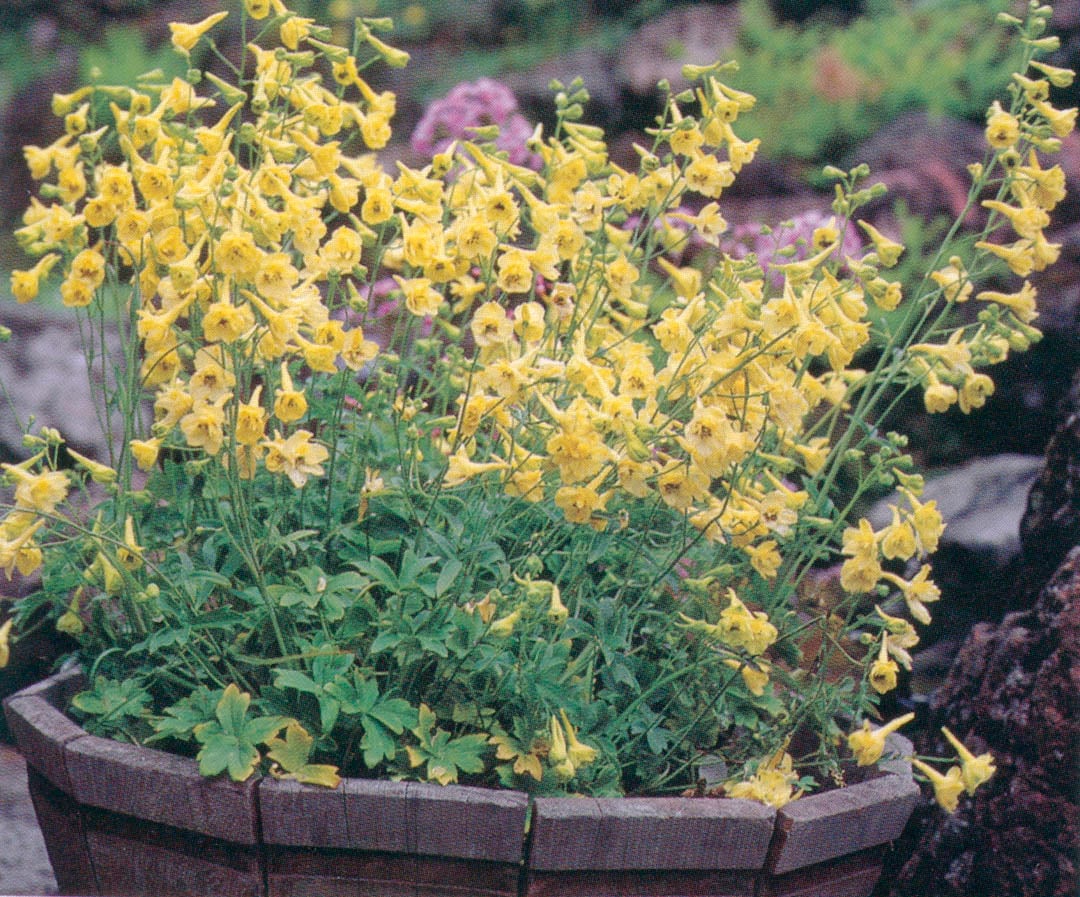
PPP Offering for Fall 2004 A Rare California Delphinium

Contributor

“Delphiniums are the first plants to come to mind when we think of traditional perennial gardens. Few serious gardeners forgo the pleasure of growing them, despite the wide range of problems attendant in their culture.”
Clause and Ekstrom, Perennials for American Gardens
Delphiniums may be among the most traditional of perennial garden plants in the midwestern and eastern United States, but on the West Coast, hybrid delphiniums probably don’t make it onto the list of top ten perennials. Although popular in the Pacific Northwest, their preference for rich soils, regular watering, and staking render delphiniums too fussy for most gardeners to bother. Instead, delphinium devotees purchase long-stemmed bunches for flower arranging and leave the cultivation to professional growers.
For West Coast gardeners, however, a world of California native delphiniums awaits discovery. According to The Jepson Manual, twenty-eight species and forty-five taxa are found within the state, yet surprisingly few are grown commercially despite their exceptional beauty and ease of propagation. Indeed, several species rival the stately spires of blue, purple, pink, and white that typify the hybrids. California’s two red orange species, Delphinium cardinale and D. nudicaule, are the most likely to appear at botanic garden plant sales or specialty nurseries, probably due to their unusual color. These vivid natives have been used in breeding programs as well.
California boasts another color uncommon to delphiniums, the lemony yellow of golden larkspur, Dephinium luteum. This rare species, now threatened by development, over-collecting, and grazing, grows in the coastal scrub plant community of Sonoma County. Only a few indigenous populations remain of this federally listed species, with well under a hundred plants between them. Fortunately, there are ex situ populations in Sonoma County, at the Santa Barbara Botanic Garden, and at the University of California Botanical Garden at Berkeley (UCBG), which holds the Center for Plant Conservation’s national collection of golden larkspur.
The Santa Barbara Botanic Garden acquired seed of golden larkspur in 1984 from the Berkeley collection. Over the years, SBBG staff continued to harvest seed from our original plants and from successive generations. Through the Pacific Plant Promotions program, we are pleased to offer young plants that germinated in the fall of 2002 and began to flower in their second spring. Although we grew them under fifty percent shade cloth, plants can tolerate full sun in coastal gardens.
In early spring, twelve- to eighteen-inch-tall, branched flower stems begin to rise above the mostly basal, shallowly lobed, succulent leaves. Bearing a dozen or more one-inch flowers per stalk, golden larkspur continues to bloom for several weeks. The characteristic spurs arch slightly, adding to the overall charm of the floral display. The blossoms merit a close look: the immature cluster of black green anthers contrasts handsomely with the unfolding, soft yellow sepals, each of which is dabbed with a light green spot.
Golden larkspur is lovely whether soloing in a pot or planted directly into the garden. The soft yellow blossoms blend well with many other colors, from the purples of lilac verbena (Verbena lilacina) or seaside daisy (Erigeron glaucus) to the blues of a groundcover ceanothus or creeping sage and the pinks of coral bells (Heuchera) and Pacific Coast hybrid irises. When in bloom, container-grown plants can be moved about in the garden, changing the combinations as often as one desires.

At the Santa Barbara Botanic Garden, records indicate that most of our native delphiniums are easy to propagate and grow in containers but are difficult to maintain in open ground. The seedlings need protection from the onslaught of snails and slugs that dine on their fleshy leaves, and, after flowering, a dry period is essential for species that naturally go dormant in summer. This holds true for Delphinium luteum. Therefore, careful siting within the garden is important to insure that unwanted summer water does not rot its roots. If a dry spot is not available, container culture is a reliable and rewarding alternative. Use a well-drained soil mix, and water plants regularly through flowering, then taper off during seed ripening. Plants appreciate a bit of fertilizer while actively growing. After the leaves wither and seeds have been harvested, move the pot to an out-of-the-way location while the plants rest. Autumn rains will revive dormant plants and stimulate germination of freshly sown seeds, ensuring new spires of golden larkspur blossoms for many springs to come.
The Santa Barbara Botanic Garden has joined with the Huntington Botanical Gardens, Rancho Santa Ana Botanical Garden, and Strybing Arboretum Society in the Pacific Plant Promotions program to offer new and unusual plants to readers of Pacific Horticulture. SBBG will be offering plants of Delphinium luteum for shipment in October and November 2004. To order one, see the Pacific Plant Promotions reservation card (opposite page 64) for details.
Share:
Social Media
Garden Futurist Podcast
Most Popular
Videos
Topics
Related Posts

Low Maintenance Gardens – Better for Pollinators and People
Autumn 2022 “I come out every day. It’s therapy, my meditation.” Janet’s young garden transformed from overgrown, invasive plants to mostly natives. The dailiness of

Calochortophilia: A Californian’s Love Affair with a Genus
Summer 2022 I can chart the progression of my life by Calochortus. For the last two decades, at least. As a teenage girl growing up

Pacific Plant People: Carol Bornstein
Spring 2022 Public gardens play a key role in demonstrating naturalistic planting design, selecting native and adapted plants for habitat, and testing techniques for reducing

Add Year-Round Interest and Winter Blooms for Pollinators
Spring 2022 This article was created from an Interview by Merrill Jensen with Neil Bell in the Summer of 2021 for our Pacific Plant People










Responses